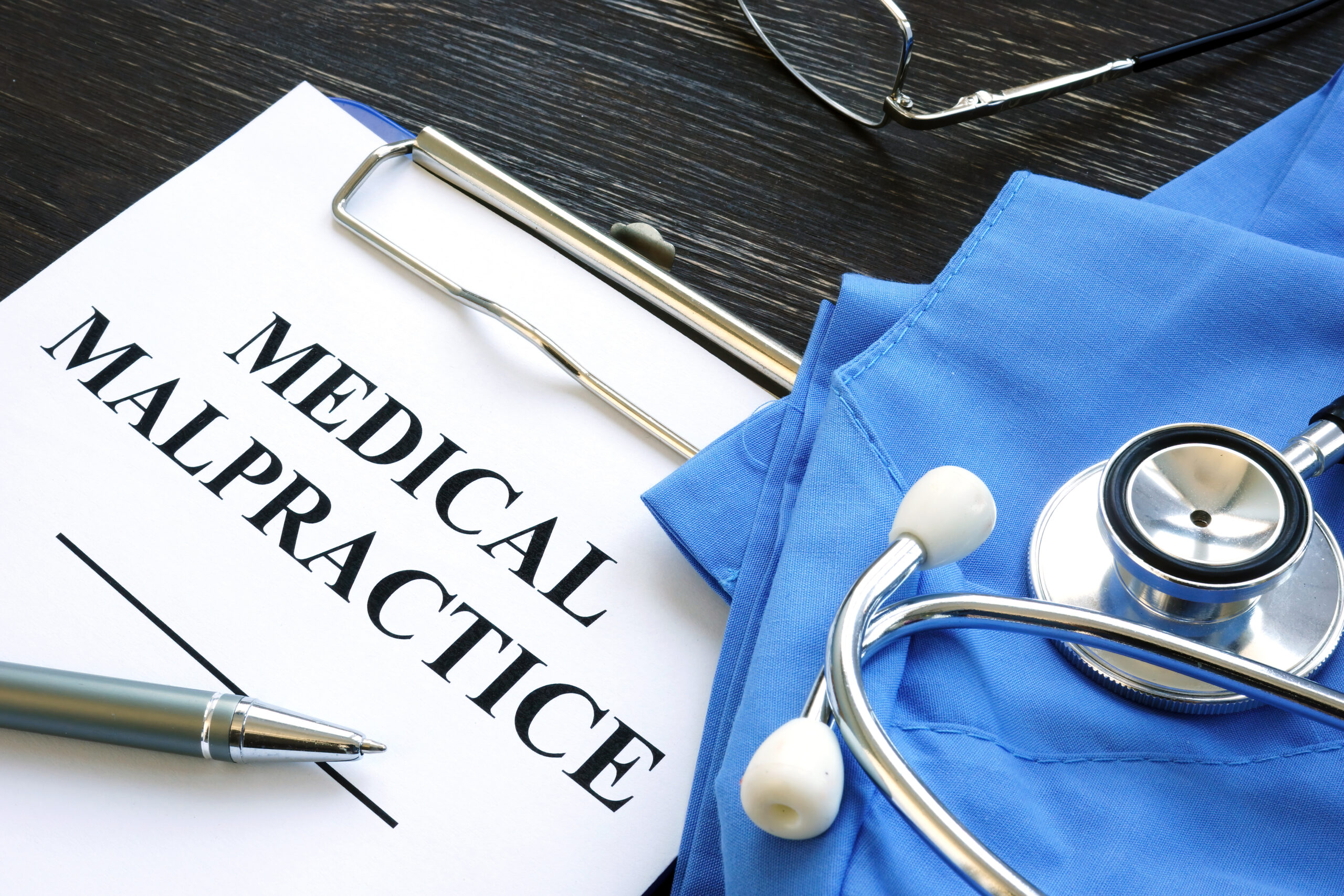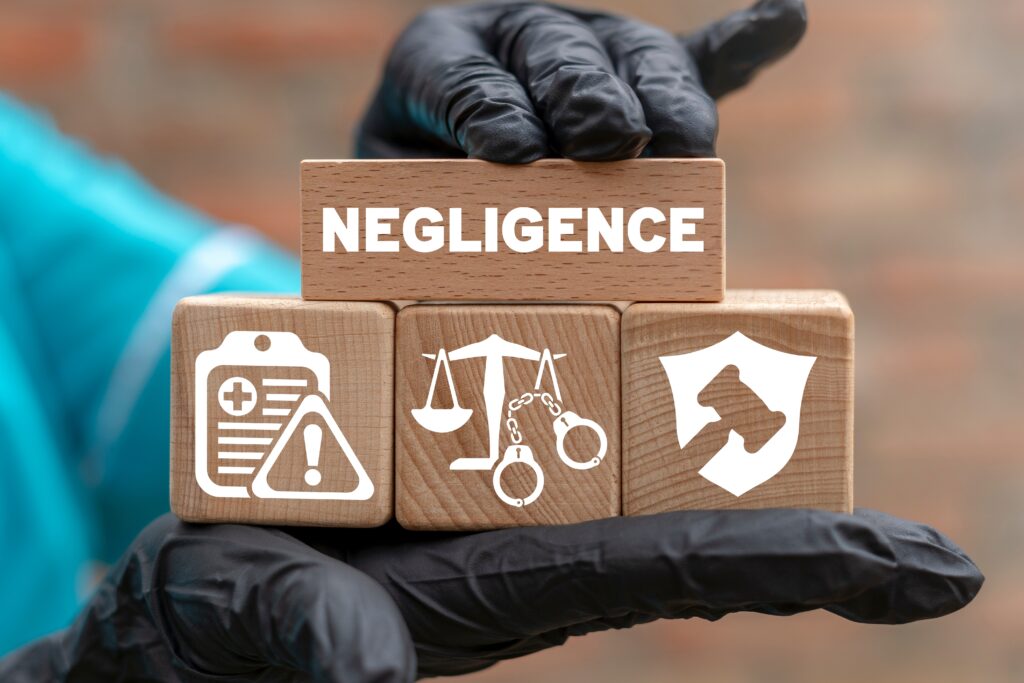What Are Common Medical Negligence vs Malpractice Examples?
Gregg Hollander | November 16, 2024 | Medical Malpractice

Medical errors can be devastating, leading to prolonged suffering, unnecessary treatments, and, in some cases, even death. Understanding the difference between medical negligence and medical malpractice can help patients and families navigate these challenging experiences and seek appropriate compensation. While both concepts involve a breach of duty by a healthcare provider, there are important distinctions. Medical negligence occurs when a healthcare professional makes a mistake unintentionally, while medical malpractice involves a breach of duty that meets specific legal criteria. Exploring common examples of medical negligence and malpractice to help clarify the differences and encourage patients to seek legal assistance if they believe they have been wronged. It’s also in their best interest to consult with a Fort Lauderdale medical malpractice lawyer to determine if they have a case.
What is the Difference Between Medical Negligence and Medical Malpractice?
The difference between medical negligence and medical malpractice lies in intent and the degree of harm caused by a healthcare provider’s error.
Medical Negligence
Medical negligence occurs when a healthcare provider makes a mistake unintentionally, usually due to carelessness, inattention, or a failure to meet basic standards of care. In negligence cases, the provider may not have intended harm, but their actions (or inaction) led to a lapse in care. An example would be a nurse accidentally administering the wrong dose of medication. Medical negligence alone does not necessarily mean the patient can pursue legal action unless it causes significant harm.
For the incident to be medical negligence, the following elements must be present, including:
- The healthcare provider breached their duty of care owed to the patient
- A causal connection between the breach and the patient’s injury
- The patient suffers identifiable damages as a result of the mistake
Medical Malpractice
Medical malpractice, on the other hand, is a form of medical negligence that meets specific legal criteria, particularly when the error involves a breach of duty that results in harm to the patient. For a case to be considered malpractice, four elements must be proven:
- A doctor-patient relationship existed, creating a duty of care.
- The provider breached that duty by deviating from accepted medical practices.
- This breach caused harm to the patient.
- The harm resulted in damages, such as medical bills, lost income, or pain and suffering.
In short, negligence becomes malpractice when it leads to significant harm due to a clear breach of duty and results in damages. Medical malpractice is often actionable in court, whereas negligence without proven harm or damages may not be.
Common Examples of Medical Negligence
Failure to Communicate Test Results
One common example of medical negligence is when a healthcare provider fails to communicate test results to a patient on time. For instance, if a test reveals an early-stage illness and the provider does not inform the patient promptly, the delay can worsen the condition before treatment begins. In this case, the provider’s negligence in not communicating important information can be deemed negligent.
Medication Errors
Medication errors are also prevalent examples of medical negligence. These errors can happen at various stages, from prescribing to administering the medication. If a nurse gives a patient the wrong medication or incorrect dosage due to misreading the instructions, this can be seen as negligence. These errors are often avoidable with greater attention to detail and proper procedures.
Failure to Obtain Informed Consent

Before conducting any medical procedure, healthcare providers must explain the risks, benefits, and potential alternatives to the patient. Failure to do so, especially if the patient suffers harm due to unforeseen complications, may constitute medical negligence. For example, if a doctor does not adequately explain the risks of surgery and the patient experiences severe complications, this lack of informed consent can be seen as a breach of duty.
Improper Use of Medical Equipment
Negligence can also occur if a healthcare provider misuses medical equipment. If a technician or nurse fails to follow the protocol for operating a machine—such as an X-ray or MRI—this can lead to unnecessary exposure to radiation or even incorrect diagnoses. Medical staff are expected to be trained on the proper use of equipment, and errors in this area can lead to preventable injuries.
Failure to Monitor Patient’s Condition
Patients in hospitals and care facilities are often monitored for changes in their health status. If a healthcare provider neglects to monitor a patient adequately and a complication develops that could have been prevented, this can be considered medical negligence. An example might include a failure to check vital signs in post-operative patients, leading to serious consequences like infections or hemorrhages going undetected.
Errors in Documentation
Inaccurate record-keeping can cause significant harm. If a healthcare provider incorrectly documents a patient’s medical history, allergies, or symptoms, it can lead to inappropriate treatments or missed diagnoses. These documentation errors are often the result of carelessness and can have dire consequences.
Common Examples of Medical Malpractice
Misdiagnosis or Delayed Diagnosis
Misdiagnosis is one of the most common forms of medical malpractice and can have severe consequences. For example, if a doctor incorrectly diagnoses a patient’s symptoms as a minor ailment, missing a more serious underlying condition like cancer, the delay in treatment can be life-threatening. In such cases, it can often be demonstrated that another competent physician would have reached the correct diagnosis in similar circumstances.
Surgical Errors
Surgical malpractice can lead to severe injuries or even death. Examples of surgical errors that qualify as malpractice include leaving instruments inside the patient, operating on the wrong body part, or performing unnecessary surgery. These errors are not just cases of negligence but breaches of the standard of care expected during surgical procedures.
Anesthesia Errors
Anesthesia is a critical component of many medical procedures, and errors in its administration can have severe consequences. If an anesthesiologist administers the wrong dosage or fails to monitor the patient adequately during surgery, it can lead to brain damage, organ failure, or even death. Anesthesia errors often meet the criteria for malpractice due to their severe and avoidable nature.
Childbirth Injuries
Malpractice can occur during childbirth, potentially causing harm to both mother and child. Examples include failing to monitor fetal distress, improperly using forceps or vacuum extractors, and not performing a necessary C-section promptly. These types of errors can lead to lifelong complications like cerebral palsy or brain damage, for which the family may seek compensation.
Failure to Treat
In some cases, even after correctly diagnosing a condition, a provider fails to treat the patient appropriately. An example might be a patient who presents with signs of a heart attack but does not receive the necessary medication or intervention on time. In these cases, the doctor’s failure to act as other qualified professionals would constitute malpractice in similar circumstances.
Prescription Drug Errors
While medication errors can also be negligent, a prescription drug error may rise to the level of malpractice when it involves blatant deviations from standard practices. For example, if a doctor prescribes a medication known to have severe interactions with a patient’s other prescriptions without considering their medical history, this can meet the definition of malpractice.
Hospital-Acquired Infections Due to Poor Hygiene Practices
Medical facilities have a duty to maintain hygiene standards to prevent infections. This can constitute malpractice if a patient contracts an infection because the hospital failed to follow established cleaning or sanitization protocols. Common examples include MRSA or sepsis, both of which can have severe health consequences if acquired in a hospital setting.
Understanding Damages in Medical Negligence and Malpractice Claims
Whether it’s a case of medical negligence or malpractice, the consequences can lead to severe physical, emotional, and financial strain on patients and their families. Damages in these cases typically fall into three main categories:
- Economic Damages: These include medical bills, ongoing treatment costs, and lost income. Economic damages aim to cover the financial losses caused by the medical error.
- Non-Economic Damages: Non-economic damages account for pain and suffering, emotional distress, and the loss of enjoyment of life. These damages address the more subjective impact of a medical error on the patient’s life.
- Punitive Damages: In extreme cases of egregious malpractice, a court may award punitive damages. These are intended to punish the offending party and deter similar behavior in the future.
The Importance of Seeking Legal Assistance

Consulting with a well-versed medical malpractice lawyer is essential if you or a loved one has been impacted by medical negligence or malpractice. Navigating a medical malpractice claim is challenging and requires understanding medical and legal principles. An attorney with experience in this area can evaluate your case, help gather the necessary evidence, and advocate on your behalf to pursue fair compensation.
A medical malpractice lawyer can:
- Evaluate Your Case: An attorney will review the facts, including medical records and expert testimonies, to determine whether you have a viable claim.
- Gather Evidence: Proving malpractice requires thorough documentation and professional support. An attorney can gather the evidence needed to build a strong case.
- Negotiate with Insurers: Insurance companies often try to settle malpractice claims quickly and for as little as possible. An attorney can negotiate on your behalf to seek fair compensation.
- Represent You in Court: If a settlement cannot be reached, an attorney can represent you in court to pursue compensation through a trial.
Understanding the Statute of Limitations for Negligence and Malpractice
The statute of limitations is a legally defined time limit within which a person must file a lawsuit after experiencing harm. Understanding this deadline is essential in medical negligence and malpractice cases because it affects a patient’s right to seek compensation. Missing this deadline can result in losing the right to pursue legal action, regardless of the case’s merits.
In medical negligence cases, where harm results from unintentional errors, the statute of limitations typically begins on the date the injury occurred. However, in cases where the harm wasn’t immediately apparent (known as “latent injuries”), some jurisdictions allow the clock to start when the injury is reasonably discovered, which may extend the filing window. This is called the “discovery rule.” For example, if a surgical instrument is left inside a patient, the statute may begin when the object is discovered rather than at the surgery date.
Medical malpractice statutes, which address more severe breaches of duty leading to significant harm, generally follow similar rules but may have stricter timelines. Courts often require proof that a healthcare provider’s error directly caused the injury. For children or patients with disabilities, extensions are sometimes granted, known as “tolling,” allowing them extra time to file if they were unable to act sooner.
Because statutes of limitations vary widely and can be complex, especially with factors like the discovery rule or tolling, consulting a medical malpractice attorney soon after recognizing potential harm is essential. An attorney can clarify the deadlines in your situation, helping you act within the timeframe and protecting your right to seek compensation for the negligence or malpractice you endured. You protect your legal rights by contacting a personal injury lawyer as soon as possible.
Protect Your Legal Rights: Consult with a Seasoned Medical Malpractice Attorney Today

Gregg M. Hollander, Fort Lauderdale Personal Injury Attorney
Medical negligence and malpractice can have life-changing effects. Although they both involve mistakes by healthcare providers, the key difference lies in the level of harm caused and whether the error meets the legal standard for malpractice. When a healthcare provider’s actions deviate significantly from the accepted standard of care and result in injury, patients have the right to pursue legal action.
If you or a loved one has been affected by a medical error and you believe it may constitute negligence or malpractice, consult a qualified medical malpractice attorney. They can help you understand your options, gather the evidence to prove your case and advocate for your right to compensation. Medical errors should not go unchecked, and holding providers accountable is essential to improving patient safety and ensuring justice for those who have been harmed.
Don’t delay in seeking a Fort Lauderdale personal injury lawyer with experience in medical malpractice or medical negligence. Remember, time is of the essence when it comes to filing a medical malpractice claim, so reach out to an attorney today to discuss your options.

